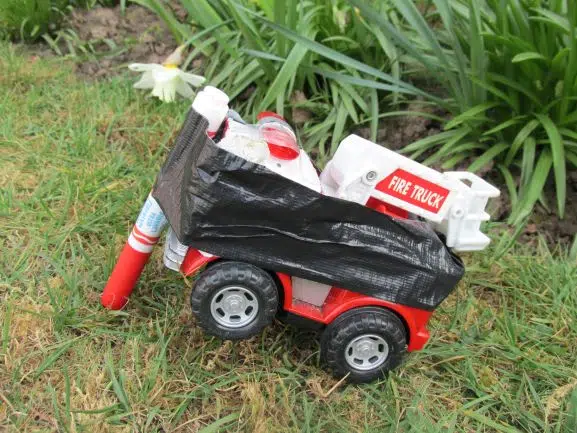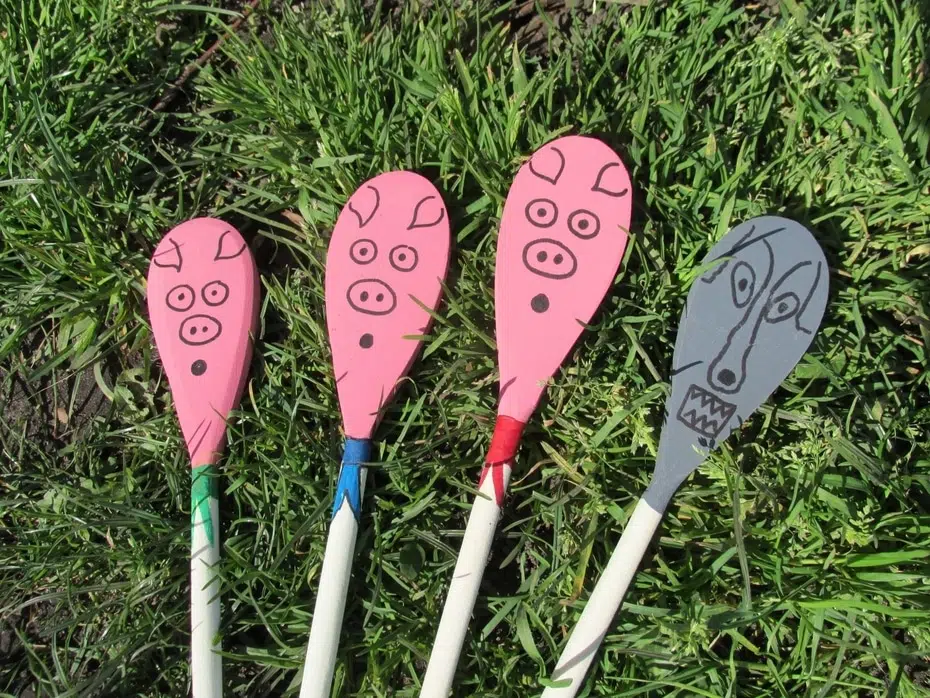Got a bored pre-schooler at home? Or maybe you have some pre-schoolers in your school or nursery that just don’t seem interested in anything? Then you’ve come to right place to sort this problem.
Pretty much the key to education is motivation. If children are interested and curious then they will learn. It really is that simple.
So, in a nutshell, how do you motivate pre-schoolers?
Provide a range of exciting play-based experiences. Think about what their interests are and cater the learning to these. Provide a balance or indoor and outdoor experiences. Praise and encourage all day long.
This is a complex issue, and one where there will be lots of components working together at the same time. I am going to try to provide the best 15 ideas I have used over the last ten years of teaching 3-5 year olds. It’s time to go on the offensive!
Just as a note, I am referring to ‘preschoolers’ as any child between the age of 3-5. I know in different parts of the world this term refers to different ages.

1.Fire Up Their Curiosity
This is probably number one in importance. Curiosity is the spark that ignites learning.
The more you can interest them in their surroundings and in activities the better. Motivation comes from within them, and curiosity is one of the primary drivers of this.
So why not try a few of the following things out:
- Put equipment into really interesting containers. Sometimes just the process of making something look appealing can really help in enticing them to use it
- Have mystery objects that they can explore
- Have things hidden boxes or bags
- Use secret messages or phonecalls from characters from stories
- Use exciting messy play substances
2. Praise!
All humans thrive on that sense of self esteem and having done things well. Praise is a massive motivator for all.
Give over-the-top, enthusiastic praise for even the smallest things. If they do a picture even of just a couple of squiggles, give them praise! If they are kind to their friend once, let them know how proud you are!
Often children will be doing lots of things wrong, but the odd thing right. Ignore the wrong, and praise the right!
Some top tips are:
- Let them know exactly what they’ve done right
- Big them up and call them a star, and a champ, and other things like that
- Tell them how proud you are
- Get other children to praise them if you can
3. Use Puppets
It is amazing how inspiring a puppet can be even to the most unmotivated child. Puppets work almost like magic – a child that shows no interest in what an adult says can sometimes be completely captivated by a puppet.
Puppets can do so many things, including:
- Praising children for achievement and behavior
- Telling them the plan for the session or day
- Teaching skills phonics, literacy or maths
- Singing songs
- Giving instructions or challenges for activities

4. Think About Reducing Technology
An overdose of technology for very young children is probably the biggest sapper of enthusiasm and motivation. You probably have more power over this if it is your own child, rather than if you teach them.
Some children will spend the vast majority of their playing time at home on ipads, computers, and other things like that. These things are great when limited. However, if children spend too long on these sources of technology their brains are overstimulated, and they find little interest in the real, concrete world.
If you are a teacher and you think this is happening, the only way probably is to try to talk to the parents.
If you are a parent, then you clearly have a lot more things you can do about it.
5. Tap Into Interests
This is huge!
Unmotivated children will always be interested in something. It is crucial to find out what this is and use this to your advantage.
For example, if a boy is interested in dinosaurs, then try adding them to different areas or activities. You don’t have to change topic or them completely, but just throw them in now and then.
You could add some dinosaurs to the construction area, or get a pet dinosaur to read stories to. Find messages or maps that have been sent by a dinosaur, or a mysterious dinosaur egg turn up out of the blue!
6. Design Activities At Their Level
A key motivator for children is challenging them at the right level. If something is too hard they give up. If it is too easy they get bored. So getting the level of challenge just right is important.
The key thing here is observation. Watch your child, or the children, as they learn and you will see what they can’t do and what they can. Set activities or learning at that level.
To find out some of the best 21 circle time games for preschool then take a look at this.
7. Provide Boy-Friendly Activities
Without wanting to be sexist at all, it is almost always the case that many boys are harder to interest and motivate in an educational setting than girls. This is not the case for all boys, of course. Far from it.
But the big rule I think is that if you get the boys on side, the girls will normally follow.
Think about using themes that are traditionally boy-friendly. For example:
• Superheroes (Check out these 12 outdoor superhero activities)
• Space
• Tranport
• Dinosaurs
• Trains (in particular)
• Pirates
• Knights and castles
Many girls will love these themes as well, and this really is not trying to stereotype children. However, generally speaking most boys will really enjoy these themes, and get them on board and the job of motivation becomes a whole lot easier.

8. Add Competition
A level of competition does not work for all children. However, for some it is a key motivator to get them going!
An excellent I often find is fine motor activities. Often some children (and once again it is often boys, though not always) take quite a bit of persuading to try them out.
However, this can be very different if it is a competition!
If the activity is just putting beads into a cup with tweezers, many children will not be interested.
However, if it is a contest then it is a completely different story! If Charlie got 6 beads into the cup in 30 seconds, then you want to do everything in your power to get more than that.
Some examples of things you can introduce competition into include:
- Races and obstacle courses
- Building things in a time limit
- Fine motor activities where you are posting or threading small objects, and counting how many you can do in a time limit.
- Who can make the biggest or longest of something
9. Firm Boundaries
Sometimes it is behavior that is the big problem behind motivation. Children have no boundaries, and so they are not enjoying what they are doing and see little value in it.
Be firm! Set clear expectations and see that children stick to them. Offer huge amounts of encouragement and praise to those that follow the group rules.
When children see they are part of a team, then sometimes they become enthusiastic about what everyone is trying to achieve together.
10. Rewarding Achievement
Give rewards out as much as possible. This could include:
- Allowing children to use special equipment if they do what they are asked
- Giving out things like stickers
- Reporting back positively to parents if they do good things, in a way that the child sees this happen
- Having things like certificates for special achievements or progress
11.Peer Success
It is great to ‘big up’ children in front of their peers.
Also children seeing others doing well can be a spur to them to try harder at whatever you are doing.
Praising and encouraging both them and those round them, will sow psychological seeds in their mind.
12.Costumes
Sometimes an element of make-believe can get children going in a way that the normal world cannot.
One example is using a costume.
This is a great strategy to link to a book. It often doesn’t take very much. Sometimes just putting on one piece of clothing, such as a hat, can be enough to turn whoever wears it into a new character.
It is amazing how a child that is not interested in what an adult is saying, can suddenly be completely captivated if you put on a cloak and pretend to be Little Red Riding Hood. This is a great way of setting challenges – children really want to do whatever Red Riding Hood has asked of them.
13.Drama
Making even the simplest things exciting with a bit of drama really helps!
For example, don’t just show them an object. First, show them a mystery box and the object is inside.
Don’t show them a puppet. Find a map that leads to where the puppet is hiding.
The more excitement and drama you can add to even the simplest resources the better!
14. Storytelling
Stories can bring pretty much anything to life.
If you show some children a stone you found outside, they probably wouldn’t be interested. But if there is a message with the stone saying it has been sent by aliens to Earth with secret powers, then the stone takes on a whole new life.
Linking things to books can really help. Wearing a troll’s hat is one thing, but if it is the real hat that the troll wears in the Billy Goat’s Gruff, then that makes it all the more magical.
Use resources to like story stones or story spoons to really get them excited about their learning. You can find my essential guide to using story stones here.

15. Adding Music/Songs
Using songs and chants to jazz up day-to-day routines and activities, really helps to tune children in, and get them focussed and more interested.
I use songs for pretty much any phonics and maths game I ever play. Often I just make them up, and you can do that too!
Songs just get children looking at you and interested. They are also brilliant for early phonics, and listening and attention skills.
Conclusion
Motivating young children is one of the most important gifts you can bestow on young children. If you can fire up their curiosity and enthusiasm, you are setting them up for future success and happiness.
More From The ‘That Really Work’ Series
